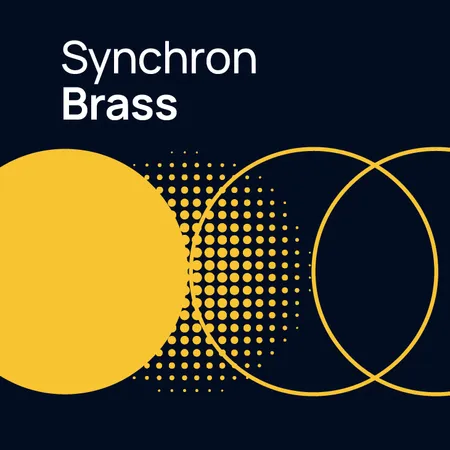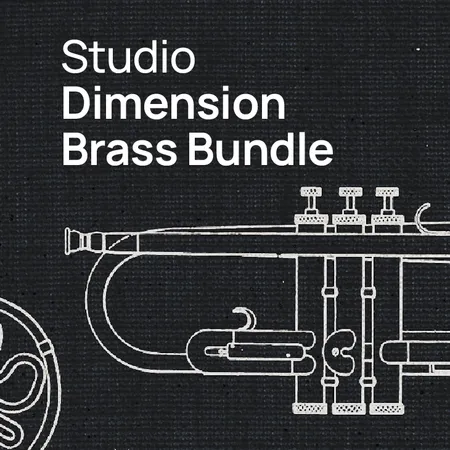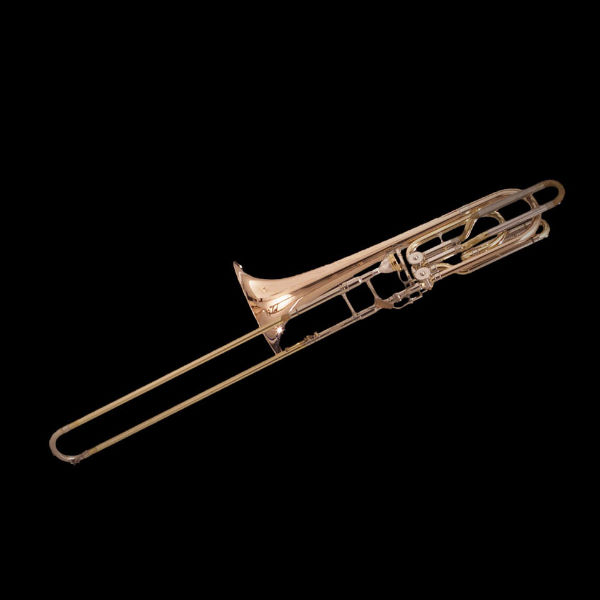
Name: Bass trombone in Bb/F
Spelling
German: Bassposaune in B/F
French: trombone basse
Italian: trombone basso in Si b/ Fa
Classification: Aerophone, brass wind instrument
Material: Mainly brass, often gold brass; nickel silver (inner and outer slides)
Mouthpiece: Cup-shaped mouthpiece, a little larger than that of the tenor trombone
Tubing: Length approx. 269-290 cm, mostly cylindrical
Bore: A little wider than the tenor trombone, inner diameter 13.8 mm
Slide
Valves: Two valves, lowering the pitch by a fourth (to F) and a minor third (to D)
Bell: Rim diameter 22.8-26.7 cm
The bass trombone is a slide trombone with two valves that are operated by the left thumb. The valves make it possible to lower the instrument's pitch from Bb to F or D. The entire chromatic scale only becomes available thanks to the thumb valve (F tuning) and an additional third-valve (D tuning). The bass trombone has a very wide range and is relatively easy to play in the lower register.
Discover our Bass Trombones
The history of the trombone's development shows that high-pitched instruments became less important in the 19th century while technical improvements were made on lower-pitched ones.
The bass trombone was already playing an important role in the instrument family (soprano, alto, tenor and bass trombone) in the 16th century. The instruments were called the “fourth” (F) and “fifth” (Eb) trombone because of their tunings in relation to the tenor trombone. During the following years the technique of placing a fourth-crook or fifth-crook in the tenor trombone was occasionally practiced to achieve the necessary tube length which would enable the tenor trombone to be used as a bass instrument, as was customary until the end of the 18th century. The maximum slide length of 92 cm (on the Eb bass trombone) and the wide positions imposed severe limitations on the speed of response of these bass trombones in the lower register. The chromaticization of horns and trumpets at the beginning of the 19th century placed greater demands on the bass trombone, and efforts were made to gain greater agility in the region of the great octave and to improve the embouchure.
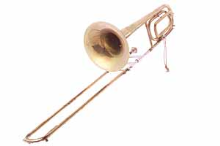
Tenor-bass trombone (Musikinstrumentenmuseum Schloss Kremsegg, Austria, Streitwieser collection)
The valves that were invented between 1813 and 1830 inspired the instrument maker F. C. Sattler of Leipzig to develop the tenor-bass trombone in 1839. He made it possible to integrate the additional piece of tubing (crook) into the U-shaped slide in front of the bell without having to make any other alterations to the tenor trombone. The addition of this piece of tubing meant that bass parts could now be played using the slides of the tenor trombone, in other words greater agility in the bass register was achieved thanks to the closer positions of the tenor trombone's slide. Players could now switch from tenor to bass pitch by means of a valve (fourth-valve or fifth-valve).
From the middle of the 19th century the new tenor-bass trombone replaced the bass trombone in orchestras and has been used as the third trombone ever since, the three-part trombone section having established itself as standard practice.
By the end of the 18th century trombones came in three sizes: alto, tenor and bass. These formed the basis of the three-part trombone section in orchestras. Soon the higher parts were being played by tenor trombones in Bb and the lower parts by a tenor-bass trombone. Bass trombones in F were also used, albeit relatively rarely. Up until the beginning of the 20th century these instruments were made primarily for military bands.
In his Ring Wagner already calls for tenor-bass trombones. Often all three trombone parts were played by a tenor-bass trombone.
Composers such as Schoenberg, Berg, Stravinsky and Shostakovitch wrote trombone parts in such a way that they could only be played by a tenor-bass trombone. Today the tenor-bass trombone (with fourth-valve and fifth-valve) is standard in symphony and opera orchestras. In spite of the tenor-bass trombone's wide range, a distinction has been made in recent times between the tenor-bass and bass trombone - both work according to Sattler's functional principle and both have the same length of tubing, but the bass trombone has a wider bore (from 13.8 mm), a wider bell (from 24.8 cm), an additional valve (either Eb or D) and a larger mouthpiece.
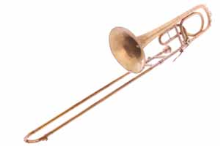
Bass trombone in Bb, Hermann Heinel, Markneukirchen, Germany (Musikinstrumentenmuseum Schloss Kremsegg, Austria, Streitwieser collection)
In around 1830, the valve system developed by Blühmel and Stölzel led to the creation of the valve trombone, on which the slide was replaced by valves. Although this instrument evinces great agility it fails to produce the typical trombone sound. It was used for a time in Italian opera in the 19th century (e.g. Verdi's Aida, Troubadour). Nowadays the valve trombone is only found in military and wind bands.
Notation in the tenor and bass clefs, no transposition. All three trombone parts are usually written in tenor clef for the upper register and in bass clef for the lower.
Although the bass trombone is tuned to Bb/F, music written for it does not take this into account: the sound is as written. The instruments in the trombone family are tuned to different keys - the alto trombone is in Eb, the bass trombone in Bb/F, the contrabass trombone in Bb. This means that the musician must use a different fingering whenever he changes instruments. The bass trombone's fingering is particularly challenging, because the fundamental pitch can be lowered from Bb1 to F1 by means of a fourth-valve and, depending on the instrument, to Eb1 or D1.
Range of the bass trombone: Bb0 - F5
The tenor-bass and bass trombones have the widest range of all wind instruments.
The natural harmonic series from the 1st to the 12th natural is generally used. Pedals are also part of the instrument's range. From the 20th century it has been usual for pedal notes to be played on the trombone. These are especially easy to play on the bass trombone because of its wider bore.
As with the tenor trombone 7 positions (slide lengths) are playable in the Bb tuning (valves closed). Each position lowers the natural harmonic series by a half tone.
Six positions are playable in the F tuning (fourth-valve open).
Five positions are possible in the D tuning (third-valve open).
In the shortest (1st) position the tube length of the Bb tuning (closed valves) is 290 cm.
In the D tuning (third-valve open) the tube length is 563 cm in the longest possible (5th) position. So when playing the lowest note on the bass trombone the musician has to vibrate an air column which is 5,6 m long!
Note
Generally tenor-bass trombones are used as tenor trombones above C2 (valves closed) and as bass trombones (fourth-valve or fourth-valve and third-valve open) below it. Playing with open valves alters the instrument's timbre.
The gap between Bb1 and E2 that exists on the tenor trombone between the 1st position's pedal (Bb1) and the 2nd natural at the 7th position (E2) is bridged on the bass trombone with the aid of the fourth-valve and third-valve. The instrument is thus rendered fully chromatic. The problematical notes B1 and C2, which would not be playable with a fourth-valve alone, can be sounded easily and well by operating the third-valve. These notes were called for in older scores and could be played with ease on the old bass trombone.
When the valves are closed the same playing techniques apply to the bass trombone as to the tenor trombone.
The valves make additional playing techniques possible.Greater ease of slide use in the two octaves below middle C enables faster playing in the lower register: shorter position changes can be chosen when playing fast scales, leading to greater accuracy (transition C3-B2).
Can be performed at a speed of MM 120 (= 4 sixteenths per quarter note = 120). The musician articulates a T T T T.
A microtonal pitch fluctuation possible in passages at any tempo and at all dynamic levels; vibrato can be played in virtually any context, from pp to ff and from slow to fast.
Sforzando
Forced, short attack followed by a rapid reduction in tone intensity.
Sforzandissimo
Forced, short attack with continuance of tone intensity.
Fortepiano
Rapid dynamic reduction from forte to piano.
Can be performed up to MM 144 (= 4 // per quarter note = 144). Articulation: TKTK
Very fast. Articulation: TTKTTK
Articulation: an R rolled against the front the mouth.
All the missing notes can be sounded by using the slide. This practice first emerged in America at the turn of the 20th century and has slowly found its way into symphonic orchestral practice by way of jazz.
This is possible both ascending and descending. The maximum extent is a diminished fifth (the interval between the 1st and 7th positions). The glissando can be played on every partial, although it is not possible to change the partial while playing it.
Third-valve: glissandos over a major third (= 1st-5th position), from the 2nd natural to the 12th.
While the slide is descending (over a maximum of three positions), the glissando is moving upward in contrary motion. This is very difficult to perform.
On the trombone, the trill is one of the less refined sounds.
Produced by rapid alteration of lip pressure and only possible between two neighboring partials of the same series. Only whole tone trills between D4 and D5 are possible.
Rapid alternation between two neighboring positions. The intonation is rather wayward and only possible as far as the 4th or 5th position. Half step trill without rearticulation.
Makes the sound more precise in forte passages and has subtle effects on pianissimo playing.
Each interval of the same series can be played by slurring.
Brassy, powerful, overpowering, solid, tense, penetrating, dramatic, hard, full, sinister, soft, round.
In general the slightly wider bore of the bass trombone lends it a somewhat darker timbre and fuller sound.
Pedals
Bb0 - Bb1Easy attack thanks to the slightly wider bore.
Lower register
B1 - F2Upper portion similar to the tenor trombone's low register. Typical bass region, true trombone bass range, powerful metallic sounds, sforzando tones easily executable.
Middle register
F#2 - F4Slightly darker than the tenor trombone.
Upper register
F#4 - F5The highest notes are somewhat harder to play than on the tenor trombone.
The bass trombone is notated as the 3rd trombone in orchestral scores and often plays the tenor trombone's lower octave or the contrabass trombone's upper octave. Its sound is effective in multiple octave combinations as well as the fundamental bass.
Good sound combination, makes the trombone sound brighter.
The metallic trombone sound is masked by the horns. 1 trombone = 2 horns when the written dynamic levels correspond.
Since it shares its dark timbre with the cello, the double-bass, the bassoon and the contrabassoon it combines well with those instruments. The bass trombone is the carrying instrument, however, the bassoon or cello merely add color.
The trombone symbolizes the hereafter, the supernatural, hell and the underworld. Its powerful sound is supposed to conjure up images of the terror and unknown dimensions of these realms of darkness. Particularly in requiems (Mozart, Berlioz, …) the trombone section, often large, is assigned the role of evoking the audience's fear of crossing over to the hereafter in the Dies irae and Tuba mirum. The symbolism is therefore religious, as it has been in opera, too, since Monteverdi (Weber's Freischütz).
Giuseppe Verdi
- Les vêpres siciliennes (1855)
- La forza del destino (1862)
- Otello (1887)
- Falstaff (1893)
Richard Strauss
- Die Frau ohne Schatten (1919)
Giacomo Puccini
- La Bohème (1896)
- Eugène Bozza
- New Orleans (1962)
On this page
- History
- The Renaissance trombone - first experiments in the bass register
- The Romantic period - the tenor-bass trombone as an all-round instrument
- Notation
- Range
- Sound production
- Valveless playing
- With the fourth-valve
- With the third-valve
- Playing Techniques
- General
- Single Tonguing
- Vibrato
- Sforzato
- Double tonguing
- Triple tonguing
- Flutter tonguing
- Glissando
- Trills
- Mute
- Slurs
- Sound characteristics
- Sound Combinations
- Bass trombone + brass instruments
- Bass trombone + woodwinds, strings
- Symbolism
- Repertoire
- Operas
- Bass trombone and piano
